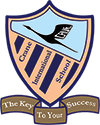All students, regardless of their differences, are educated together, everyone benefits—this is the cornerstone of inclusive education.
Inclusive education means different and diverse students learning side by side in the same classroom, and we value diversity and the unique contributions each student brings to the classroom. A successful classroom is one that looks, very much like an interactive classroom.
Effective Classroom Talk
It is a very loud classroom: students verbalising what they are doing in terms of meeting a learning outcome, the strategies that they are following, and whether or not they are working
Students are all the time looking at what they have done, self-assessing what they have done, and talking about what they have done
Teacher Modelling
Teachers encourage students to question, question where they are before the task, during the task, after the task
Teachers cultivate students’ abilities to reflect on, monitor, and evaluate their learning strategies
A cultural shift; it is about Time
Giving students and teachers time to develop metacognitive strategies in the school
Allowing plenty of time for discussion of strategies
Devoting time to planning
Thinking about strategies in advance of the activity
Without fear of failure
John Hattie says ‘mistakes are the essence of learning’.
if a student fails, that student learns from that failure rather than sees that as a way of stopping the learning
it is like thinking about thinking and your performance
Looking at evaluation and self-assessment
Reflexive Thinking
Students learn to “think about their own thinking.”
Students begin to challenge their own biases and become more flexible and adaptive thinkers
At the end of lesson, young people become more self-reliant, flexible, and productive

